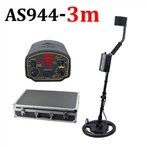Factors Influencing Coating Thickness Measurement
Why do instruments sometimes measure inaccurately?
This is a rather general question. There are various reasons for the inaccuracy of the instrument. For a single coating thickness gauge, the total station mainly has the following reasons for inaccurate measurement.
(1) Interference from strong magnetic fields. We once conducted a simple experiment where measurements were severely disturbed when the instrument was operating near an electromagnetic field of around 10000 V. If it is very close to the electromagnetic field, there is still a possibility of crashing.
(2) Human factors. This situation often happens to new users. The reason why the coating thickness gauge can measure micrometers is because it can take small changes in magnetic flux and convert them into digital signals. If the user is not familiar with the instrument during the measurement process, the probe may deviate from the measured body, causing changes in magnetic flux and resulting in erroneous measurements. So it is recommended that users master the measurement method before using this instrument for the first time. The placement of the probe has a significant impact on the measurement, and the total station should keep the probe perpendicular to the surface of the sample during the measurement. And the placement time of the probe should not be too long to avoid interference with the magnetic field of the substrate itself.
(3) No suitable substrate was selected during system calibration. The minimum plane of the substrate is 7mm and the minimum thickness is 0.2mm. Measurements below this critical condition are unreliable.
(4) The impact of attached substances. This instrument is sensitive to attached substances that hinder the probe from making close contact with the surface of the cover layer. Therefore, it is necessary to attach substances to ensure direct contact between the probe and the surface of the cover layer. When performing system calibration, the surface of the selected substrate must also be exposed and smooth.
(5) The instrument has malfunctioned. At this time, you can communicate with technical personnel or return to the factory for repair.





